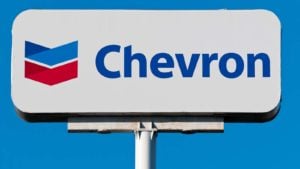Energy stocks have underperformed the market in 2023 as investors made a pivot to growth in anticipation of the Fed cutting rates. This is likely to reverse in 2024 as markets turn to value in the face of slowing growth.
The energy sector has significantly underperformed the market this year amid falling oil and gas prices after a blockbuster year in 2022. The Energy Select Sector SPDR Fund (NYSEARCA:XLE), a proxy ETF for the energy sector, is up by roughly 1% year-to-date and has trailed the broader market.
Market observers are now forecasting a shift in the market dynamics, predicting that energy stocks will outperform their tech counterparts in the coming 12 months following an underwhelming year. Over the last three months, tech stocks have surged while energy stocks have experienced broad declines.
Along these lines, investors should focus on cost-effective stocks exhibiting robust free cash flow yields. An additional criterion includes low price/earnings ratios and minimal short interest. This marks a departure from the inclination towards high P/E ratios that characterized recent successful trends.
The strategy of pursuing growth and momentum, as opposed to value stocks, dominated in 2023. Notably, companies with the highest forward price/earnings ratios emerged as the top performers this year, potentially owing to their elevated PE ratios.
We could easily see a scenario where lower-priced stocks rise while higher-priced ones fall. This emphasis on value suggests a shift towards safety amid concerns about a slowdown in economic growth. This inclination hints at a departure from optimism towards a more cautious stance in the upcoming year.
Let’s explore specific energy stocks to buy that align well with these market expectations.
Exxon Mobil (XOM)

Exxon Mobil (NYSE:XOM) is a multinational energy corporation that operates in the exploration, production, refining and marketing of oil and gas. The company actively engages in various aspects of the energy industry providing investors with a diversified energy portfolio through its prominent presence in the sector.
The company recently updated its Corporate Plan to incorporate a heightened focus on its Low Carbon Solutions business leading to a capex range increase from $22 billion to $27 billion annually in 2025-2027.
The commitment to capital returns remains steadfast, with an escalated annual share buyback target of $20 billion through 2025, post the projected closure of the Pioneer Natural Resources (NYSE:PXD) transaction. In October, Exxon announced that it plans to merge with oil giant Pioneer Natural Resources in a deal valued at nearly $60 billion. This sector consolidation should cement Exxon’s market-leading position.
Moreover, Exxon aims for increased cost reductions, targeting an additional $6 billion in savings by the end of 2027, building on the $9 billion already achieved in structural cost savings relative to 2019 levels. This should bode well for XOM stock price in 2024.
Chevron (CVX)

Chevron (NYSE:CVX), a multinational energy company, operates in the exploration, production, refining, and marketing of oil and gas. Similar to Exxon Chevron shares a focus on diversified energy operations and a commitment to sustainability initiatives.
Recently, Chevron joined Exxon in hiking its budget as the oil chase intensifies. The oil and gas giant said it anticipates a capital expenditure of $15.5 billion to $16.5 billion for 2024, with an affiliate capital expenditure budget of around $3 billion.
The projected upstream spending in 2024 is approximately $14 billion, while downstream capex is expected to be roughly $1.5 billion. Within these budgets, an allocation of about $2 billion is dedicated to lowering carbon capex, aiming to reduce the carbon intensity of traditional operations and foster new energy business lines.
Responding to Exxon’s acquisition of Pioneer, Chevron said it has agreed to a deal to buy Hess (NYSE:HESS) for $60 billion. This acquisition further upgrades and diversifies Chevron’s already advantaged portfolio.
The company offers sector-leading shareholder returns in the medium and long term. Investors are likely to focus on updates on Permian production in 2024, both operated and non-operated, and progress updates on Tengizchevroil in the upcoming quarters.
EQT (EQT)

EQT (NYSE:EQT) is a natural gas producer that operates in the exploration and production of energy resources. The EQT actively develops shale formations, especially the Marcellus and Utica shales, and is renowned for strategically optimizing its natural gas portfolio, offering greater exposure to gas prices compared to Exxon and Chevron.
According to recent reports, EQT is reportedly considering the sale of a portfolio of minority stakes in wells located in Pennsylvania’s Marcellus shale formation, potentially exceeding $3 billion in value. The stock responded well to these rumors, which contributed to the YTD gains of 15.9%.
The natural gas producer is collaborating with an investment bank to facilitate the auction of these stakes. The assets EQT aims to divest are situated across Northeast Pennsylvania, collectively yielding a current production of approximately 700 million cubic feet per day.
The bull case for EQT hinges on improving its Free Cash Flow (FCF) in the latter half of this decade by reducing contractual gathering rates, enhancing netbacks from recent firm sales agreements, and achieving a shallower decline rate profile.
These goals are aligning with the company’s strategic efforts to optimize operational efficiency and financial performance. In the meantime, investors are likely to scrutinize EQT’s capacity to enhance its FCF and shareholder returns via cost reduction and gas marketing.
On the date of publication, Shane Neagle did not hold (either directly or indirectly) any positions in the securities mentioned in this article. The opinions expressed in this article are those of the writer, subject to the InvestorPlace.com Publishing Guidelines.

